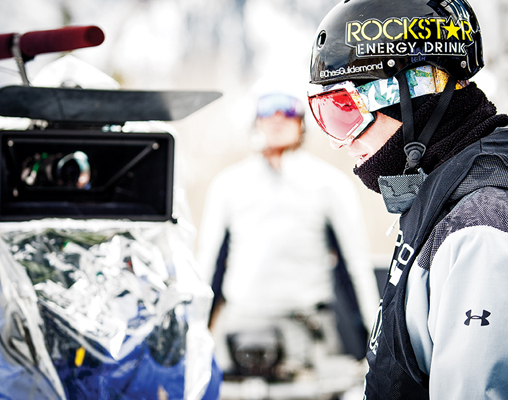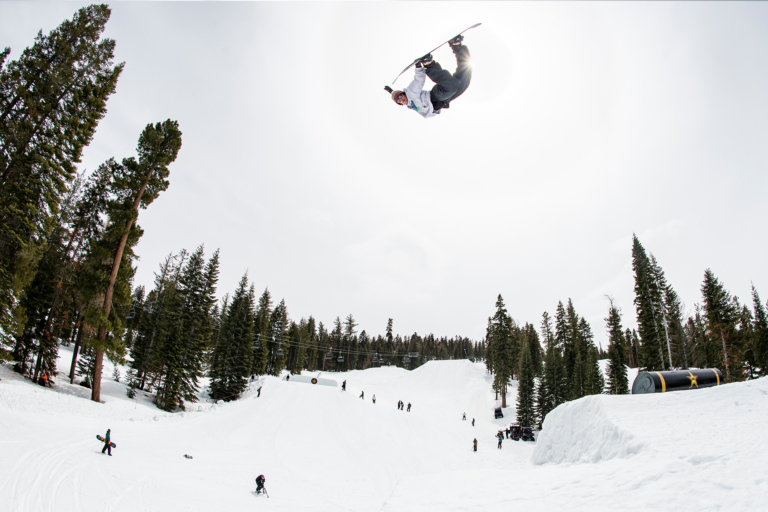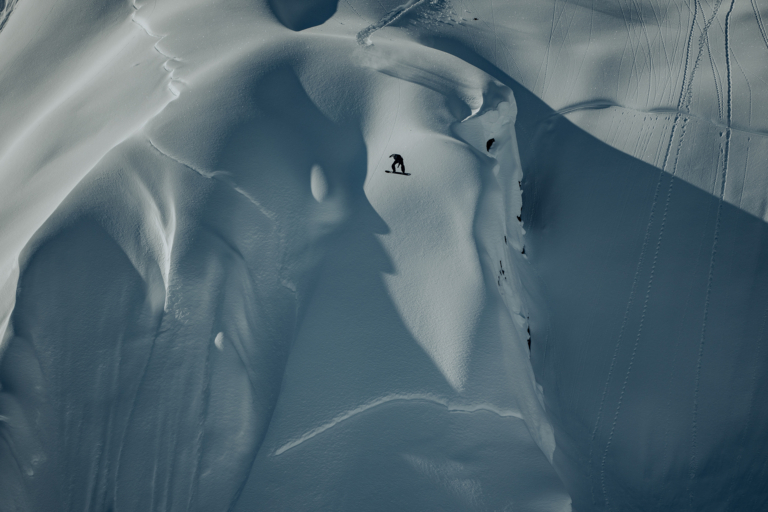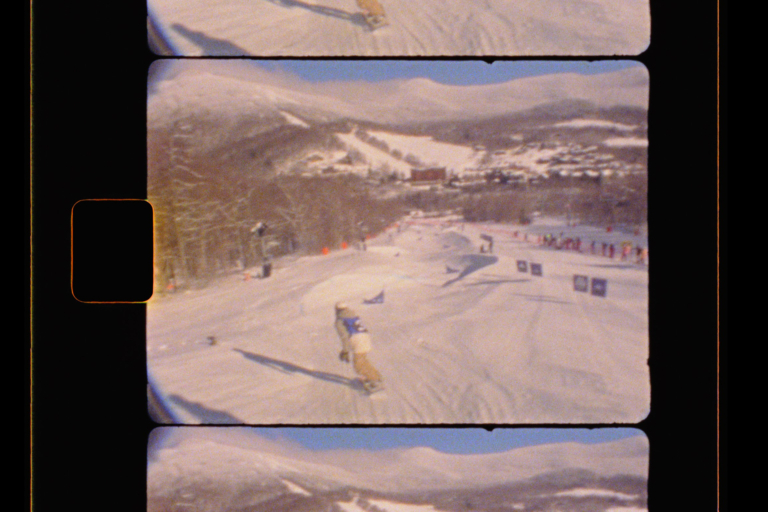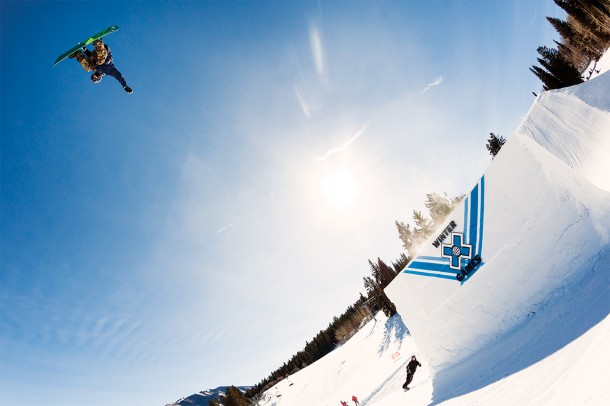
PROGRESSION
Men’s slopestyle has jumped leaps and bounds the last few years and a new wave of female slope riders are upping the ante bringing style and bigger tricks to what seemed to be a somewhat stalled women’s progression. Coaches have become a common sidekick for a number of athletes, and training in the gym has been taken more seriously. However, many athletes argue that the progression cannot be blamed on this particular event being added to the roster. Hana Beaman says, “Progress happens, and to pin it on one thing is kind of silly. Everybody does things for their different reasons.”
Stale Sandbech admits he’s training more in the gym but it’s “not really because of the Olympics, but more about the level of riding these days and how much we ride.” Stale adds, “It is getting to a level where we get a good beating when we crash, so anything that prevents injuries is needed.” Cheryl Maas, the first girl to do a cab double cork in the backcountry, explains that having a coach is not a bad thing nowadays, as long as it’s the right person. “There are positive and negative sides to coaching,” says Maas. “It’s nice to have someone with you that you can discuss your runs with and that can give you good tips. The scary thing is that they take the creativity away, because I see new kids being trained and they all have the same style. There will be no new Nicolas Müllers coming from a coaching system.”
Sage Kotsenburg justifies the use of a coach, saying, “I always thought just riding with friends and pushing each other was way better than a coach telling you what to do. But over the years I have met and ridden with awesome coaches that know how to do it right. You just got to find one that actually knows what he is talking about, because there are some that will just get you hurt from trying to make you send it.”
There’s no denying that since halfpipe’s debut in the Olympics snowboarding’s popularity has skyrocketed, and with the addition of slopestyle there’s bound to be a large increase in the audience’s attention. Progression increases on a steady line as well. X Games 2011 gold medalist, Enni Rükajârvi, has noticed an increase in progression in women’s halfpipe riding, but notes that slopestyle may not see that same increase until after the Olympics. Enni says, “I think you can see the difference if you compare women’s halfpipe and slopestyle. The level of the riding is higher in halfpipe, they are doing nines, tens and even doubles, but in slopestyle the girls don’t do that many tens or nines in runs yet.” Enni adds, “But now that slopestyle is in the Olympics girls will have to start trying more tricks. And same for the guys with triples.”
One thing that may help or hinder the progression of slopestyle at the Olympics will be the course. Canada’s golden boy, Mark McMorris, reviewed the sketched course preview which was released early last fall, and said that, on paper the course “looks awesome and should allow for many different lines to separate yourself from the rest of the pack.” While Sage Kotsenburg agrees that the course looks fun, he also raises a good point: “If you are gonna have the Holy Grail event it should have four jumps because there are four ways of spinning and it would be awesome to see everyone test all of their spin skills.”
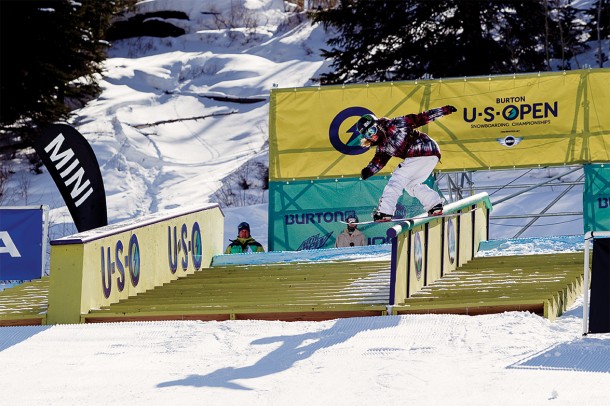
RISE TO THE CHALLENGE
As some athletes break sweat training for one event in Sochi, there are others who are preparing for multiple. Shaun White and Stale Sandbech will be dueling it out in both slopestyle and halfpipe. Further upping the ante, 2010 Olympic halfpipe gold medalist, Torah Bright, is preparing for three events this time around; slopestyle, boardercross and halfpipe. Her ‘no fear’ approach to snowboarding helps her see there is nothing to lose. “Why am I doing this?” says Torah. “I ask, why not? It’s all just snowboarding, and I love snowboarding. Being spread so thin and the excitement of chasing this and seeing if it is possible is giving me the chance to enjoy snowboarding more than I ever have! I feel like a giddy 12-year-old again when it comes to snowboarding!” Torah adds, “With the world again tuning in for the Winter Olympics and following the journey of many athletes, I feel it is a way I can give back to the sport that has given me so much by really enjoying the journey and sharing that with those that care. It’s my journey, and I’m loving it!”
Norway’s Kjersti Buaas, who has competed in halfpipe in three Olympic Games and took home the bronze medal at the Turin, Italy Winter Games is now shifting her focus to slopestyle. “I am extra grateful to receive an opportunity to compete in the Olympics once again, but this time in a new discipline that has never before been represented at the Olympics. I have new steam that keeps me motivated to wanna progress because I absolutely love riding jumps and rails, and a slopestyle course can be such a playground.”
On the next page: Words from the wise | For the love of snowboarding!
